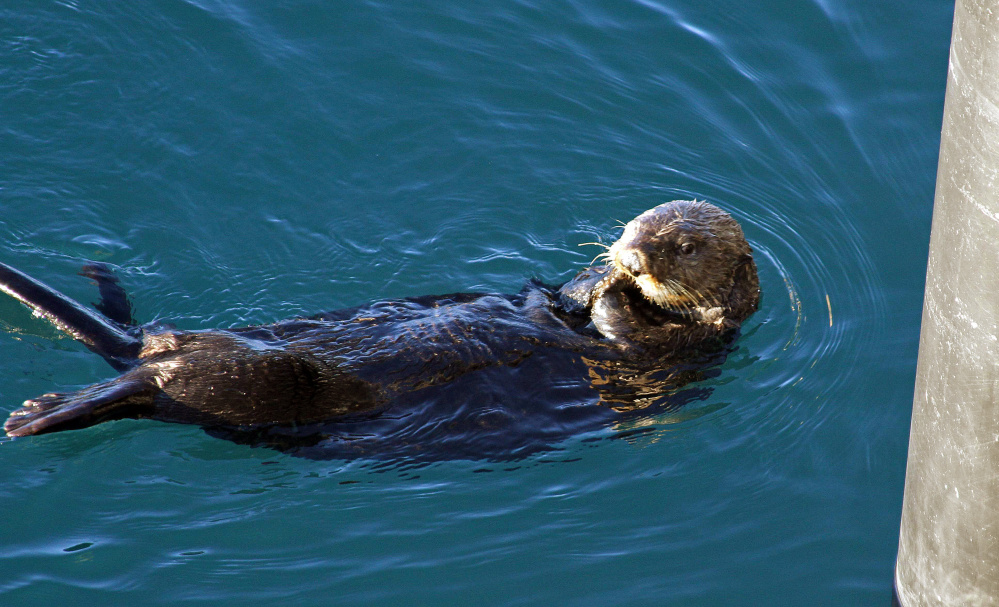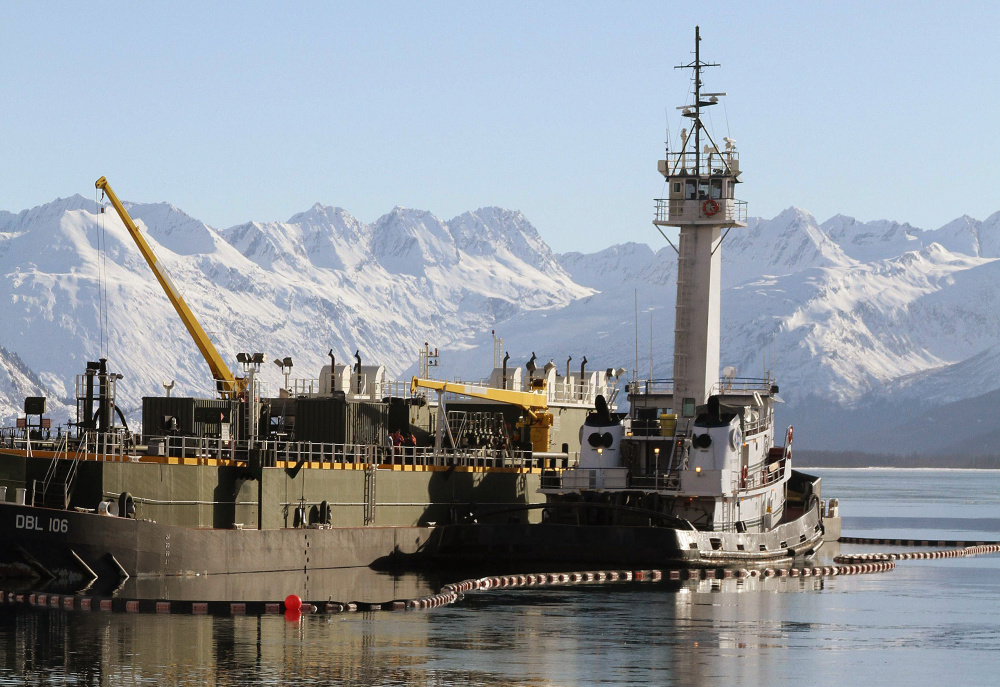ANCHORAGE, Alaska — A federal study of Prince William Sound sea otters affected by crude oil spilled from the Exxon Valdez has concluded that the marine mammals have returned to pre-spill numbers a quarter century after the disaster.
Sea otters feed on clams. Crude oil from the spill remained in sediment years after the spill and likely contributed to a delay in sea otter recovery, said lead author and research biologist Brenda Ballachey.
“One of the lessons we can take from this is that the chronic effects of oil in the environment can persist for decades,” Ballachey said by phone Friday.
The 987-foot Exxon Valdez, carrying more than 53 million gallons of Alaska North Slope crude oil, strayed from shipping lanes on March 24, 1989, and struck Bligh Reef. The damaged supertanker leaked 10.8 million gallons. Crude oil flowed southwest along nearshore waters all the way to Kodiak Island.
Responders recovered nearly 1,000 sea otter carcasses from the entire spill area. The estimated number of immediate deaths attributed to the spill ranged from fewer than a thousand to 3,000, Ballachey said.
Sea otters rely on their thick fur to survive in cold water. Fur covered by oil loses its insulating value. A sea otter with oiled fur must groom itself, which leads to the ingestion of oil and causes other problems, including time taken away for feeding, Ballachey said.
In the years following the spill, she said, chronic problems connected to lingering oil likely may have killed as many sea otters as in the first year.
“Our modeling exercises suggest that the number of otters that died from chronic exposure was close to the same number as died from acute exposure,” she said.
Researchers studied sea otters with aerial surveys and annual carcass recoveries. On the demographic side of sea otter studies, scientist looked at overall numbers and the ages of animals found dead. In areas unaffected by a spill, most of the dead animals recovered are very young or very old.
A decade after the spill, sea otters still were not returning to areas hit hard by oil, and lingering oil was detected as a reason. Through 2007, according to an earlier study, sea otters digging in sediment were coming into contact with lingering crude oil from two to 24 times per year, Ballachey said.
Besides soiling fur, scientists detected differences in blood chemistry consistent with liver damage, Ballachey said.
“We felt that low levels of exposure have been sufficient to affect survival of the population,” she said.
Things got better after 2007. By 2009, many areas of western Prince William Sound were showing a sea otter population that matched pre-spill numbers.
Ages of dead animals in the heavily damaged areas now match areas that were not affected, Ballachey said.
Copy the Story LinkSend questions/comments to the editors.




Success. Please wait for the page to reload. If the page does not reload within 5 seconds, please refresh the page.
Enter your email and password to access comments.
Hi, to comment on stories you must . This profile is in addition to your subscription and website login.
Already have a commenting profile? .
Invalid username/password.
Please check your email to confirm and complete your registration.
Only subscribers are eligible to post comments. Please subscribe or login first for digital access. Here’s why.
Use the form below to reset your password. When you've submitted your account email, we will send an email with a reset code.